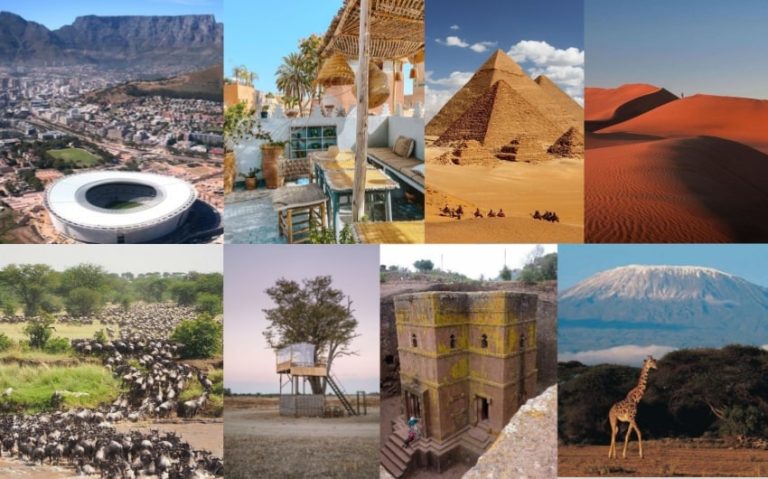The Top 10 Largest Cities in the U.S. by Area and Their Impact
Embark on an enlightening journey to discover the 10 largest cities in the U.S. by area. This exploration is not just about vast landscapes but also the unique stories and characteristics that define these urban giants. From sprawling metropolises to hidden gems, uncover what makes these cities stand out in the vast tapestry of American urban geography.
Criteria for Measuring City Size
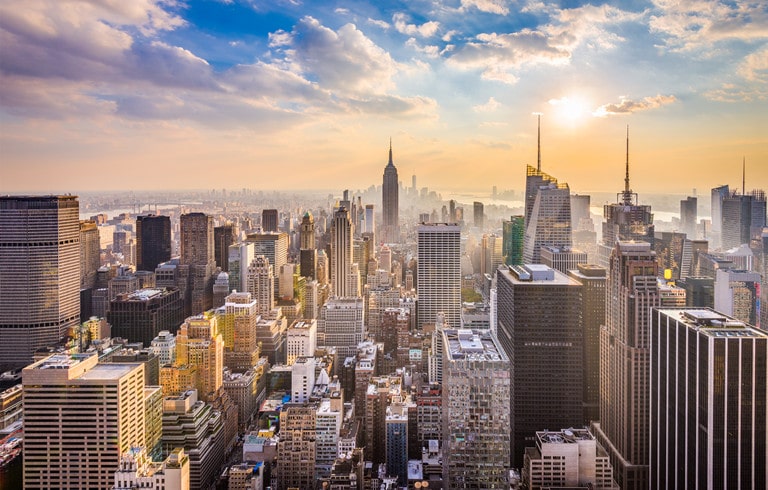
Understanding the size of a city involves more than just looking at a map. When we talk about the largest cities in the U.S. by area, it’s essential to clarify the criteria used for measurement. This segment of our exploration dives into the nuances of how city size is determined and why these measurements are significant.
Defining City Area
The most straightforward metric for city size is land area, which includes all the ground a city covers, excluding bodies of water within the city limits. This metric is crucial as it reflects the actual space available for development, habitation, and infrastructure.
Land Area vs. Metropolitan Area
It’s important to differentiate between the land area of a city and its metropolitan area. The metropolitan area can encompass multiple cities, towns, and rural areas that are socio-economically linked to the urban center, often through commuting patterns. However, for our focus on the largest cities by area, we are specifically looking at the land area of individual cities.
Geographical and Administrative Boundaries
The size of a city can also be influenced by geographical and administrative decisions. Some cities have expanded their boundaries through annexation, incorporating surrounding land into the city limits. This expansion can significantly increase a city’s size and often reflects historical growth patterns and urban planning decisions.
Implications of City Size
Understanding a city’s size by area offers insights into its urban planning, infrastructure, and capacity for growth. Larger cities by area might have more green spaces, diverse land uses, and potentially less population density. On the other hand, the vastness of an area can pose challenges in terms of transportation, service delivery, and cohesive urban development.
Measurement Challenges
Measuring the size of a city is not always straightforward. Natural features like rivers, mountains, and lakes can shape city boundaries in irregular ways. Additionally, the methods of measurement and data sources can vary, leading to slight discrepancies in reported sizes.
Significance in Urban Studies
From an urban studies perspective, the size of a city by area is a fundamental metric that can influence everything from environmental policies to infrastructure development and urban sprawl. It shapes the way residents interact with their city, the distribution of resources, and the city’s overall character and lifestyle.
By examining these criteria, we gain a deeper understanding of what it means to be one of the largest cities in the U.S. by area. It’s a multifaceted concept that goes beyond sheer landmass to encompass the intricacies of urban development and planning.
Top 10 Largest Cities in the U.S. by Area
10. Phoenix, Arizona (517 square miles)

Image source: Pinterest
Notable Features: Phoenix is renowned for its unique desert landscape, vibrant arts scene, and extensive outdoor recreational opportunities. The city’s growth has been marked by innovative urban planning, focusing on sustainability in a desert environment.
Historical Significance: Established in the mid-19th century, Phoenix’s development has been closely tied to the advent of air conditioning and irrigation innovations. The city’s history is a testament to human ingenuity in overcoming the challenges of a desert climate, transforming it into a thriving metropolis. Phoenix’s cultural heritage, influenced by Native American and Hispanic traditions, adds to its rich historical tapestry, visible in its architecture, arts, and cuisine.
9. Houston, Texas (637 square miles)

Image source: Pinterest
Notable Features: Houston is known for its diverse population, significant role in the space industry, and as an energy hub. The city has a vibrant cultural scene, with numerous museums, theaters, and a dynamic culinary landscape.
Historical Significance: Founded in 1836, Houston rapidly grew into a commercial and railroad hub. Its history has been shaped by the oil boom, leading to rapid economic and population growth. Houston also plays a critical role in space exploration, hosting the Johnson Space Center. The city’s history reflects a blend of innovation, cultural diversity, and economic transformation, making it a vital player in the nation’s development.
8. Oklahoma City, Oklahoma (621 square miles)

Image source: Pinterest
Notable Features: Oklahoma City is characterized by its diverse landscape, ranging from urban districts to pastoral outskirts. The city is known for its cowboy culture, as well as a growing arts and culinary scene.
Historical Significance: Established after the famous Land Run of 1889, Oklahoma City’s history is rooted in pioneer spirit and resilience. The discovery of oil in the early 20th century transformed it into a booming oil town.
Today, Oklahoma City honors its rich heritage through museums and cultural events while embracing modern urban development. The city’s history of transformation and growth is a narrative of adapting to change while preserving its unique cultural identity.
7. Butte, Montana (716 square miles)
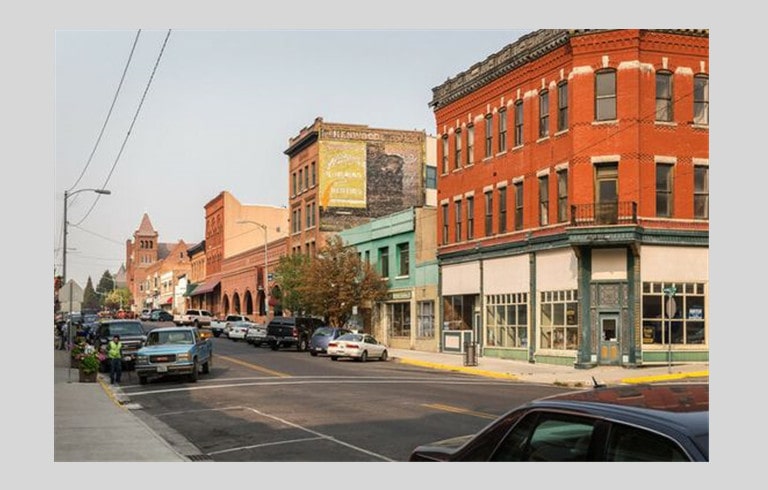
Image source: Pinterest
Notable Features: Butte is distinguished by its rich mining history and stunning mountainous terrain. The city’s landscape is dotted with historical mining structures, alongside modern developments.
Historical Significance: Established in the late 19th century, Butte’s history is deeply intertwined with the mining boom, particularly for copper, earning it the nickname “The Richest Hill on Earth.” This mining heritage played a crucial role in the city’s development and the broader industrialization of America.
Butte’s historical narrative is also marked by the labor movement and the significant contributions of immigrant communities to its growth. The city’s museums and heritage sites offer a glimpse into its past, chronicling its journey from a mining camp to a significant contributor to the nation’s industrial and technological advancements.
6. Anaconda, Montana (735 square miles)

Image source: Pinterest
Notable Features: Anaconda is known for its vast natural landscapes, including forests and wildlife reserves, and a rich history in copper smelting.
Historical Significance: Anaconda’s establishment in the 19th century is closely linked to the copper mining industry. The city was pivotal in copper production, which played a significant role in the electrification and industrial growth of the United States. Anaconda’s history is a tale of industrial might and economic fluctuations tied to the fortunes of the copper industry.
The city’s transformation over the years reflects a shift from heavy industrialization to environmental restoration and preservation, showcasing a commitment to balancing its industrial heritage with sustainable practices.
5. Jacksonville, Florida (874 square miles)

Image source: Pinterest
Notable Features: Jacksonville boasts a unique combination of urban development and extensive natural areas, including beaches, parks, and the St. Johns River.
Historical Significance: Jacksonville’s history dates back to the early 18th century, with a strategic location that has made it a key player in regional trade and military history. The city has been a crossroads of cultures, from Native American inhabitants to Spanish and British colonial influences, and later a pivotal site in the Civil War.
Post-Civil War, Jacksonville emerged as a major tourist destination and business center. Its rich history is reflected in its diverse architecture, cultural festivals, and the preservation of historic sites, illustrating its evolution from a colonial outpost to a modern, multifaceted urban center.
4. Anchorage, Alaska (1,706 square miles)
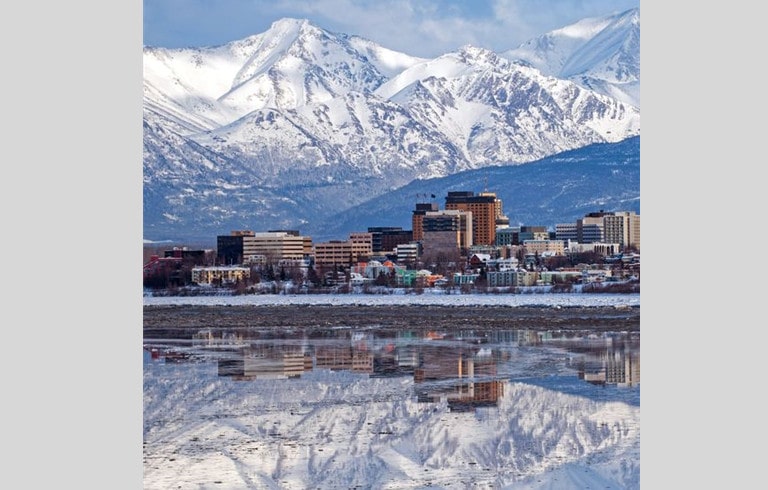
Image source: Pinterest
Notable Features: Anchorage is known for its stunning natural beauty, encompassing vast wilderness areas, mountains, and an extensive coastline. The city is a gateway to outdoor adventures like skiing, hiking, and wildlife viewing.
Historical Significance: Founded in 1914 as a railroad construction port, Anchorage’s development is closely tied to its strategic location and the Alaskan Railroad. Its history reflects a blend of indigenous heritage and the impact of railroad and military development.
Over the years, Anchorage has evolved into a key center for oil and gas industries while preserving its unique natural environment and cultural history, including the influence of native Alaskan cultures.
3. Wrangell, Alaska (2,541 square miles)

Image source: Pinterest
Notable Features: Wrangell stands out for its breathtaking landscapes of islands, rainforests, and glaciers. The city is rich in wildlife and offers exceptional opportunities for fishing, boating, and exploring the Alaskan wilderness.
Historical Significance: Wrangell’s history is unique, having been governed by four nations: Tlingit, Russia, Britain, and the United States. Established by the Russians in the 19th century as a trading post, the city has a storied past involving the fur trade, gold rush, and fishing industry. Wrangell’s deep cultural roots are visible in its well-preserved Tlingit heritage sites and artifacts, which are a testament to the city’s long and varied history.
2. Juneau, Alaska (2,702 square miles)
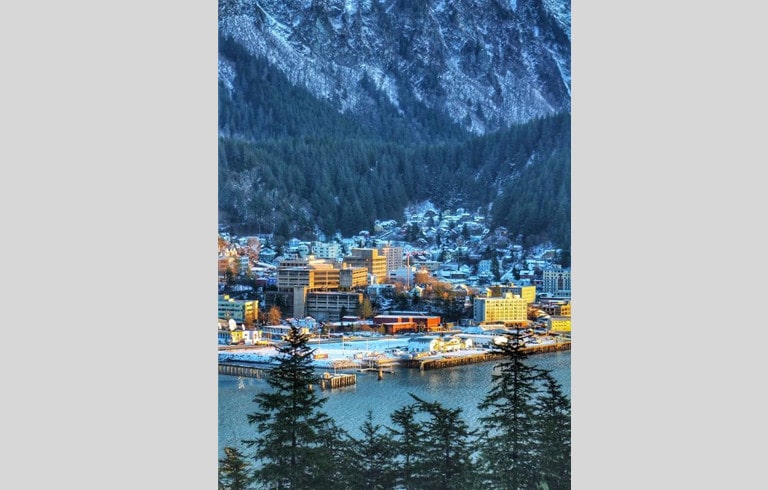
Image source: Pinterest
Notable Features: Juneau, Alaska’s capital city, is known for its remote and scenic location, accessible only by sea or air. The city is surrounded by ice fields, mountains, and the sea, offering unique urban living in close proximity to nature.
Historical Significance: Founded during the gold rush in the 1880s, Juneau’s history is deeply entwined with mining. The city has played a significant role in Alaska’s political history since becoming the state capital in 1906. Juneau’s blend of natural beauty, mining history, and political significance makes it a city with a unique story, reflected in its diverse architecture, cultural institutions, and the preservation of historical mining sites.
1. Sitka, Alaska (2,870 square miles)
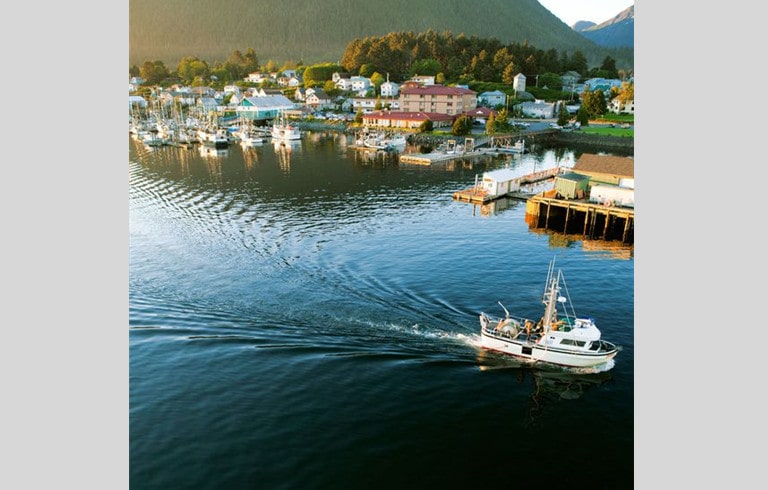
Image source: Pinterest
Notable Features: Sitka is renowned for its extraordinary natural beauty, featuring a mix of rainforests, mountains, and islands. The city’s rich cultural heritage is evident in its well-preserved Tlingit and Russian historical sites.
Historical Significance: Sitka’s history is deeply rooted in its role as a hub for the Tlingit people and later as a key Russian settlement in North America. The city was the site of significant historical events, including the transfer of Alaska from Russia to the United States in 1867.
Sitka’s past as a center for trade, culture, and diplomacy between indigenous peoples and European settlers has left a lasting impact, shaping its unique cultural landscape and making it a living museum of Alaska’s diverse history.
Conclusion
In this exploration of the 10 largest cities in the U.S. by area, we’ve seen how land area offers a unique lens through which to view urban development. From sprawling landscapes to densely packed districts, these cities reflect the diversity and complexity of American urban geography. They are not just large in size but rich in stories, history, and cultural significance.


